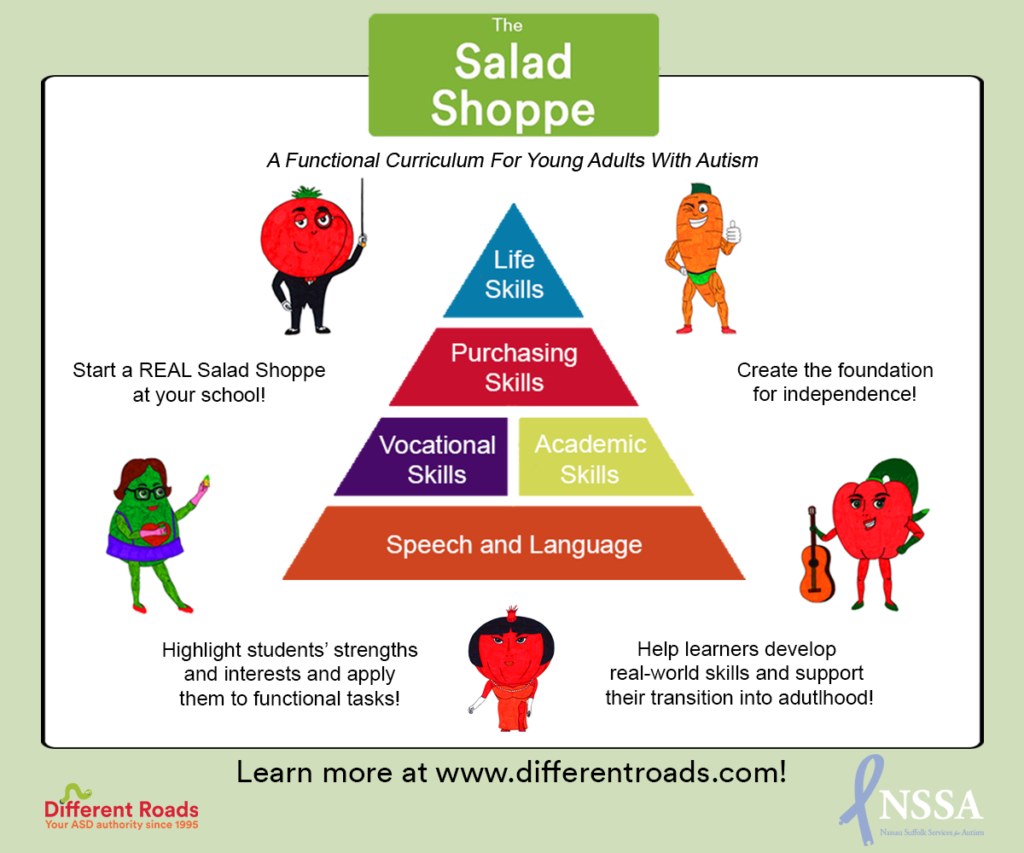Compassion requires three actions: listening, understanding, and acting. ABA is a compassionate practice by definition, because behavior analysts are trained to do each of these actions in very specific ways.
Listening is necessary for consent. Behavior analysts are required by ethical and professional guidelines to ensure informed consent prior to implementing assessment or intervention. Informed consent includes demonstrating that you understand what you are agreeing to, so behavior analysts should be listening to clients and their parents/guardians to determine if this understanding exists. If they are really consenting, clients or their parents/guardians will always be in control of the goals targeted and strategies of intervention.
Understanding occurs through the functional perspective taken by behavior analysts, which means that they take the time to learn and understand why behavior is happening or not happening. After listening to what is important to and for the client, the next step is to assess behavior. Put simply, the behavior analyst endeavors to get into their client’s shoes and figure out why they are acting the way they are acting. The assumption is always that the individual has good reasons for their behavior, and if those actions are going to change, we need to figure out how to replace them or make them less necessary, more efficient, or easier. We assume that people are right about their interactions with the world. If anything needs to change, it is the world, and not the person.
Acting is done through the development of interventions designed to improve the client’s situation and experience, based on the priorities established by the client through listening and consent. Behavior analysts hold social validity to be a very important value, in that not only should behavior change be meaningful and helpful to the individual who is changing their behavior, but the ways in which behavior is changed must also be acceptable. Behavioral interventions are not done to people, but with them, to help them meet their own goals in ways that they find reasonable.
Consent, assessment, and intervention meet the three requirements for compassion – listening to someone to hear what is concerning them, attempting to understand or feel their distress, and then doing something to alleviate their problems. Failure to take steps to listen to concerns and understand behavior takes the “analysis” out of the practice and reduces it to a collection of tricks that sometimes work but often don’t, and sometimes even make things worse. Unfortunately, sometimes poor training or supervision, or simple unethical practice, results in behavior analysis that is not compassionate and that reflects badly on the whole field.
Consider two scenarios that could happen when a well-meaning behavior analyst meets a new client for the first time, and finds that the client engages in high rates of stereotypy:
● Behavior analyst A draws upon her experience and determines that the levels of stereotypy that the client engages in will likely be disruptive in school and other community environments. She informs the family that stereotypy is inappropriate and teaches the parents to implement a comprehensive plan that includes environmental enrichment, positive reinforcement for periods of time when stereotypy does not occur, and asks them to collect data throughout the day on levels of stereotypy. Then she leaves with a promise to return in a week to evaluate their progress. The parents call the agency and say that they don’t think ABA is for them.
● Behavior analyst B has a lengthy conversation with the family about their preferred activities as a family. She asks them what they love to do with their child, and finds that they all enjoy going to the playground but that they usually reserve that activity for chilly days or early evenings and that they have been going less and less. When this is explored a bit further, they share somewhat reluctantly that both parents are uncomfortable when other parents and children stare when their child engages in stereotypy. The behavior analyst asks what they would like to do about this, if anything, or if they feel that their current strategy is working for them. The parents ask if they can think about it, and the behavior analyst agrees to discuss at next week’s meeting. In the meantime, she leaves them with some websites about functional assessment to look over. At the following week’s meeting, the parents say that they would like to prioritize other issues over stereotypy at this time, but they would like to learn more about functional assessment to see if it could help them to understand stereotypy a bit better.
In these scenarios, behavior analyst A provided a set of interventions that are not aversive and potentially not difficult for a trained professional to implement, but perhaps overwhelming to a family newly introduced to ABA. She prioritized the goals for intervention based on her experience rather than the family’s needs and preferences, without taking the time to listen to them and ensure consent. She also did not assess or attempt to understand the behavior and instead attempted to swiftly take action to reduce it. In addition, she did not attempt to determine if the interventions were acceptable to the parents or the child. If the family did choose to continue with her plan, it is possible that stereotypy might have decreased, but it is also possible that her plan would fail to meet the function of the behavior, resulting in unnecessary stress and a poor experience for the child. Ultimately, the family decided that this approach did not fit with their needs and they lost out on all of the potential benefits of well-implemented ABA for other areas of their child’s life, such as improving communication and independence.
By contrast, behavior analyst B moved slowly. She did not start by trying to identify problems, but by listening to the family by exploring their strengths and reinforcers, providing her with knowledge about how to connect with the child and parents and how to create a fun, warm, and enjoyable experience for everyone. She allowed them to share what makes it difficult for them to enjoy those reinforcers, and she opened the door to helping them with this issue if that is what they want. She did not provide a solution without consent or assessment, however. She left them with information and time to think, and the family was comfortable to have her return and continue to explore what would be best for their child in the context of their family. Ultimately, by listening and assessing, this behavior analyst has a chance of eventually acting and providing truly compassionate service and care to this client and family.
Both behavior analysts mean well. Both want what is best for their client. Neither behavior analyst wants to frighten families, make children cry, or take away what they enjoy. Both have rich resources at their disposal, but only one will likely be able to share those resources and meet her goals and the goals of the family. Practicing with compassion keeps communication open, but failure to demonstrate compassion by not listening and not understanding can result in a closed door and a great loss for the family and the field.
When practiced correctly and compassionately, ABA includes several features. First and foremost, there is a continuous emphasis on client and family input. Goals, strategies, and outcome measures are determined in consultation with the individuals who will be affected by the intervention. This includes not only the individual person receiving services, but those who love that person as well. Taking a broad viewpoint that includes the whole family is an important part of compassion.
Next, not only should behavior analysts obtain consent as mentioned earlier, but they should also be sure to get assent from clients who are not able to legally consent. Assent is a less formal version of consent that can be given by children or individuals who have cognitive differences that make it impossible for them to truly consent. Due to the extreme nature of the behavior of some individuals who receive behavior analysis services, at times assent is not obtained for safety reasons. This should only occur during times of crisis when the individual and/or those around them is in true danger. Any such occurrence should be immediately followed by obtaining consent and then conducting assessment and analysis of ways to prevent crises from occurring in the future. Interventions should be acceptable to all parties, including the individual receiving services. Again, many individuals who receive ABA services cannot verbally express assent, but the behavior analyst should be skilled enough to recognize behavioral indicators of assent or lack of assent, and adjust their actions accordingly.
Compassionate behavior analysts are also flexible. They recognize that there are changing circumstances in clients’ and their families’ lives, and that sometimes even effective plans need to be adjusted. They also recognize when sometimes despite their own best intentions, their efforts are not working well and they are willing to step back, reevaluate, and adjust approaches as needed. Behavior analysts should also be honest about what they can offer, their competence and comfort level with what is being asked of them, and how clients and families can best participate in their own services. Finally, it is crucial for behavior analysts to make human connections with the families they serve. Many behavior analysts find it easy to connect with their clients through their reinforcers and successes, but it is also important to maintain a connection with the rest of the people in their clients’ lives by showing interest and concern for them.
One final thought is that compassion can be a two-way street. Behavior analysts can most successfully connect with the client and family when the effort to connect is reciprocated. Although it is up to the behavior analyst to attempt to make the family comfortable in sharing their needs and preferences, sometimes we don’t know what we don’t know. Even the most compassionate and skilled professional might miss something, so families and if possible, clients, should speak up and let them know if that is the case. It is also important to be clear about whether or not consent and assent are being given. If the behavior analyst is not asking for consent, it is perfectly acceptable for the client or family member to pause the interaction and discuss what the limits of implied consent may be in any individual situation. Finally, families who demonstrate flexibility, connection, and honesty in return and who are open about any reservations or discomforts are allowing for the maintenance of a longer-term and more productive relationship, which will only help their loved one more.
References Consulted
Behavior Analyst Certification Board. (2014). Professional and ethical compliance code for
behavior analysts. Author.
Callahan, K., Foxx, R. M., Swierczynski, A., Aerts, X., Mehta, S., McComb, M. E., Nichols, S. M., Segal, G., Donald, A., & Sharma, R. (2019). Behavioral artistry: Examining the relationship between the interpersonal skills and effective practice repertoires of applied behavior analysis practitioners. Journal of Autism and Developmental Disorders, 49(9), 3557-3570.
LeBlanc, L. A., Taylor, B. A., & Marchese, N. V. (2019). The training experiences of behavior analysts: Compassionate care and therapeutic relationships with caregivers. Behavior Analysis in Practice, 13, 1-7.
Taylor, B. A., LeBlanc, L. A., & Nosik, M. R. (2018). Compassionate care in behavior analytic treatment: Can outcomes be enhanced by attending to relationships with caregivers? Behavior Analysis in Practice, 12(3), 654–666.
About The Author
Dana Reinecke is a doctoral level Board-Certified Behavior Analyst (BCBA-D) and a New York State Licensed Behavior Analyst (LBA). Dana is a Core Faculty member and Associate Chair in the Applied Behavior Analysis department at Capella University. She is also co-owner of SupervisorABA, an online platform for BACB supervision curriculum and documentation. Dana provides training and consultation to school districts, private schools, agencies, and families for individuals with disabilities. She has presented original research and workshops on the treatment of autism and applications of ABA at regional, national, and international conferences. She has published her research in peer-reviewed journals, written chapters in published books, and co-edited books on ABA and autism. Current areas of research include use of technology to support students with and without disabilities and online teaching strategies for effective college and graduate education. Dana is actively involved in the New York State Association for Behavior Analysis (NYSABA), and is currently serving as Past President (2019-2020).





